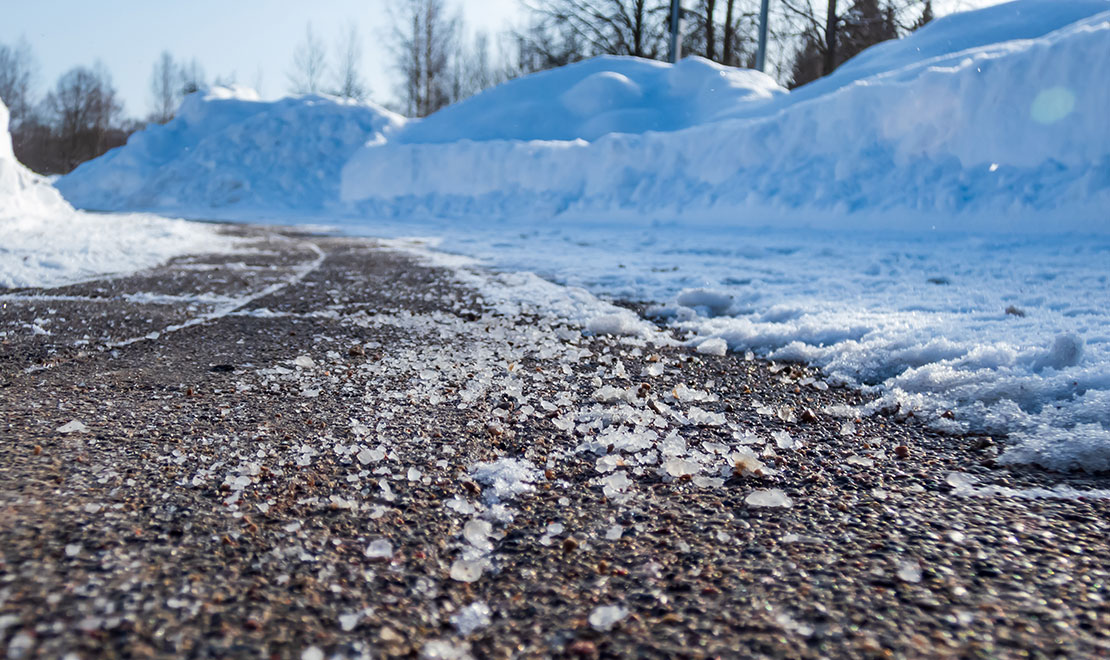
Does De-Icing Salt Have Any Effect On The Land?
Icy roads and sidewalks are a hazard not just for pedestrians but also for motorcyclists and drivers in the winter, as they can cause serious accidents. To deal with this scenario, pre-emptive snow management measures often entail the use of de-icing agents such as salt. In fact, deicers have been shown to considerably minimize the number of accidents and injuries during the winter season.
But how exactly do deicers work? De-icers are substances that lower the freezing point of water, preventing ice from forming on a surface. While they are a useful resource that help improve road safety throughout the winter months, they can be extremely detrimental to the ecosystem and landscape. Deicing salts are known to be especially hazardous. Read on to learn why.
Deicing Dangers
Deicing methods are commonplace and necessary, but they need to be used mindfully to minimize the impact they have on the environment. Here are some ways in which deicers can cause significant harm:
- Deicers can harm landscape plants and other vegetation. Due to their high toxic content, deicers have the potential to destroy flora when used extensively. This is especially true for landscape plants lining roads and major thoroughfares, where leftover salt from runoff can infiltrate into the soil and cause dehydration. Homeowners should be cautious of excessively deicing their yards with salt, as these compounds can collect and harm flora such as perennials, shrubs, and turfgrasses over time.
- Deicing salts and chemicals induce runoff, which pollutes groundwater and eventually poisons and adulterates the water you drink. It is estimated that one teaspoon of salt can pollute roughly 5 gallons of water.
- High chloride content can harm soil structure and produce 'physiological drought,' a condition that causes plant dehydration.
- Deicing chemicals contain a high level of chloride content, which can induce toxicity in natural water bodies when present in large quantities, affecting marine species such as fish, amphibians, and other aquatic bugs.
- Deicing agents can also cause substantial damage to the structure of roadways, as certain salts can corrupt stone, asphalt, concrete, and even metal.
While the use of deicing salts and chemicals cannot be dismissed in absolute terms, they must be used with caution and only in critical conditions. Town councils and regulatory authorities must also take measures to manage and maintain road infrastructure consistently during the winter months to avoid the possibility of deicing later.
- Shoveling and sweeping snow regularly is one method of reducing ice buildup.
- If there is snow, it is best not to apply deicers directly on the snow, but rather to wait for it to melt or to remove it before applying.
- Deicing salts should also be applied sparingly and evenly rather than in large quantities.
- To avoid the chance of salt run-off, it is critical to remove any residual salt grains after the surface has dried.
Popular De-icing Agents
Chloride-based chemicals are the most cost-effective deicing agents, and thus the most popular. Although sodium chloride (NaCl) is the most commonly used deicer, there are also other substances such as calcium chloride, magnesium chloride, and other complex chloride materials that are occasionally used. Sometimes, organic additives like brine, beet juice, or even carbohydrates are added to these chemicals to reduce corrosion.

